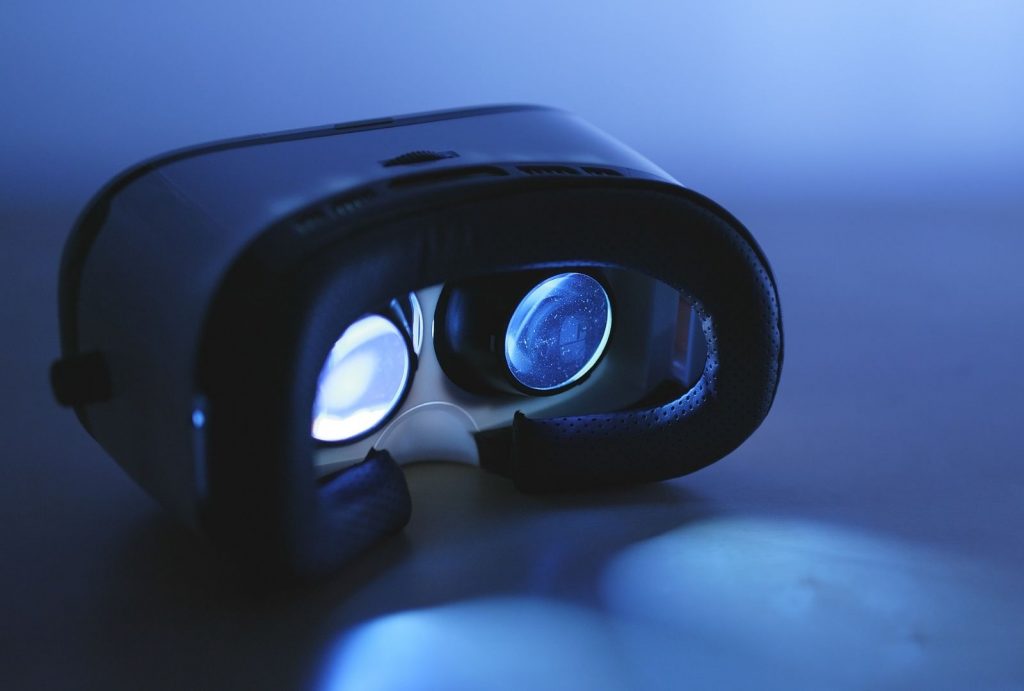Virtual reality technology is entering an era of greater application in a variety of fields(ASU-niverse)
Extended reality, or XR, is a term that encompasses multiple forms of digital worlds, including virtual and augmented realities and mixed reality, which combines real-world and digital elements of AR and VR.
The amalgamation of these XR worlds into one virtual space is known as the metaverse, a term coined in 1992 by author Neal Stephenson in his sci-fi novel “Snow Crash.” This platform would function similarly to the internet — users can move between digital worlds and interact with other users and the objects in the space.
Facebook changing its corporate brand to Meta and developing content to be used in the metaverse is opening the door for XR to become a norm in many fields.
Mina Johnson is a cognitive psychologist in the psychology department at ASU and the owner of Embodied Games, an VR gaming company that develops educational STEM content.
Johnson said she believes that VR will become vital to the learning environment in the coming years, and the only reason it hasn’t already is because of the high cost of entry, with pricey headsets and a lack of existing educational content in VR.
A Brave New Universe
Here at ASU, XR has been centered in research and development at the Learning Futures Collaboratory (LFC), led by Heather Haseley and Dan Munnerley.
The LFC is studying and creating technology for the future of education and teaching students in multiple disciplines about XR worlds and how to create them. Haseley said she feels this future is near, coming within the next three-to-five years.
“We’re also going to be starting up another class where students expand virtual worlds, or Dreamscape virtual worlds, and start to make it more like … an open world,” Munnerley said.
These virtual worlds will eventually be connected in one central virtual world, affectionately dubbed the “ASU-niverse” by Haseley and Munnerley.
Because students will be creating and expanding virtual experiences, then centralizing them on one metaverse-like platform, the “ASU-niverse” appears to be created by students, for students.
Aashiq Shaikh is a PhD student who created the Virtual Tutoring Simulation as a test to see how quickly that type of interactive content could be created. Shaikh said he can see the University’s program heading toward a larger XR experience.
“I see these sort of small baby steps and eventually, I think the University will be building the actual educational experiences and things like that,” he said.
However, as with all new technology, there remain many questions about how ASU will tackle the issues of accessibility, privacy and safety.
Entering the ASU-niverse in its most immersive format would require a VR headset of some sort that is compatible with the platform, the cheapest of which costs $300. The steep financial barrier to entry into this student universe could mean excluding students who cannot afford a special, separate device.
Munnerley said LFC is working around this and is planning to render the worlds using cloud streaming, so the virtual world can be accessed on a PC or laptop. But the experience just wouldn’t be the same.
Aside from the financial barrier, the next difficulty the team faces is accommodating all kinds of disabilities, including vision impairments, hearing impairments and physical disabilities.
Fully immersive VR currently requires users to be able to see, hear, walk around and use both arms to interact with their surroundings, so reasonable accommodations would have to be made in order for the “ASU-niverse” to be inclusive.

